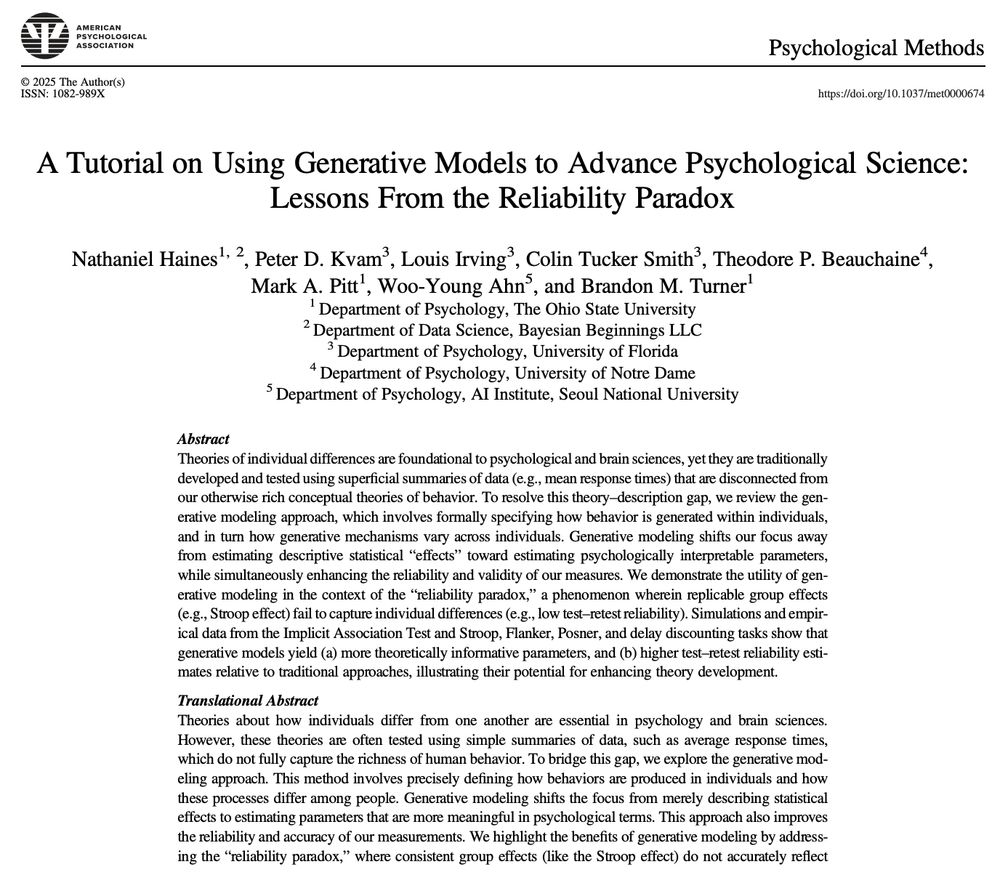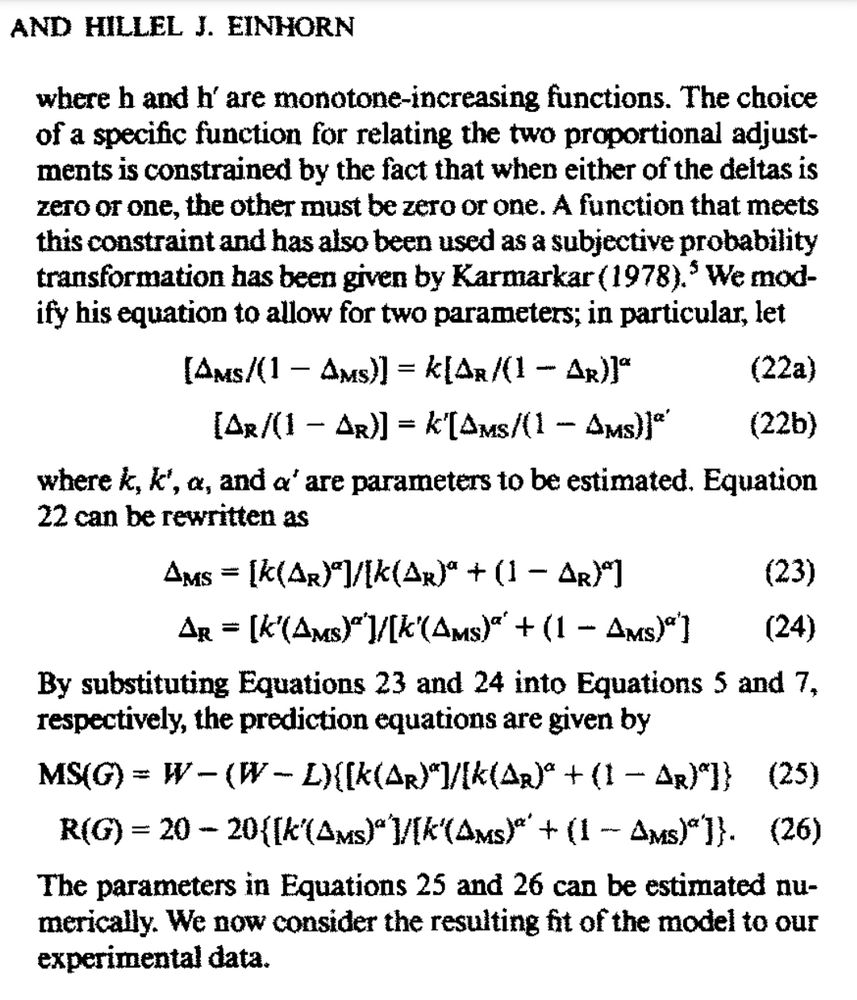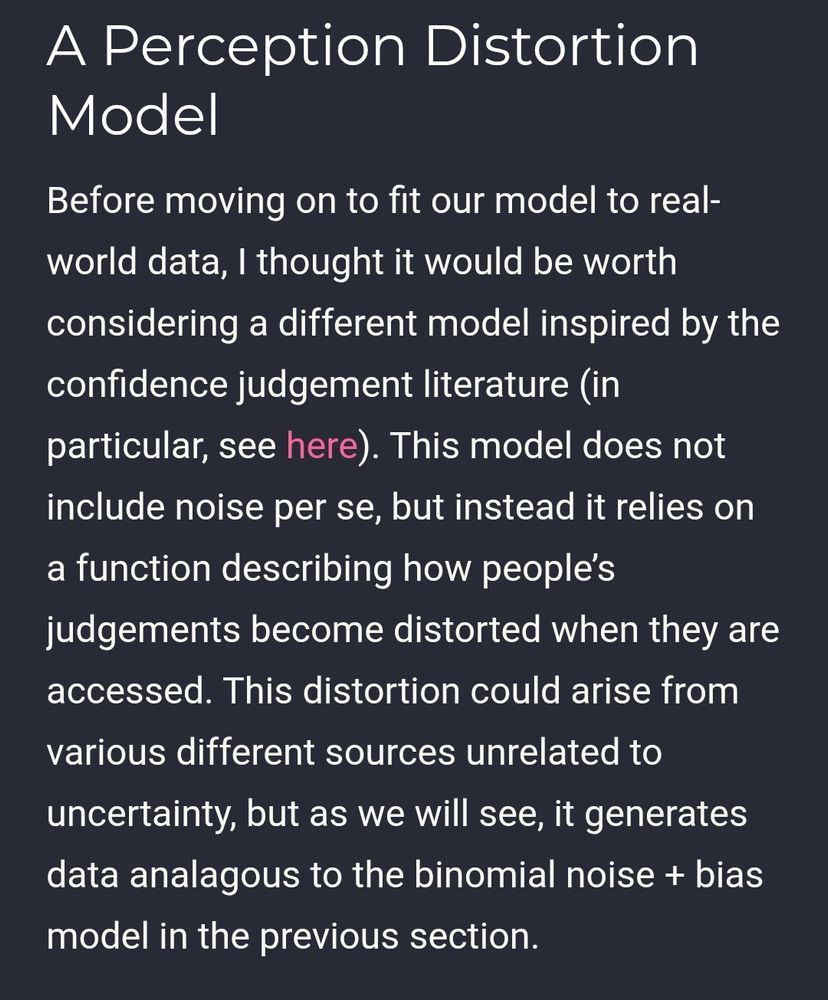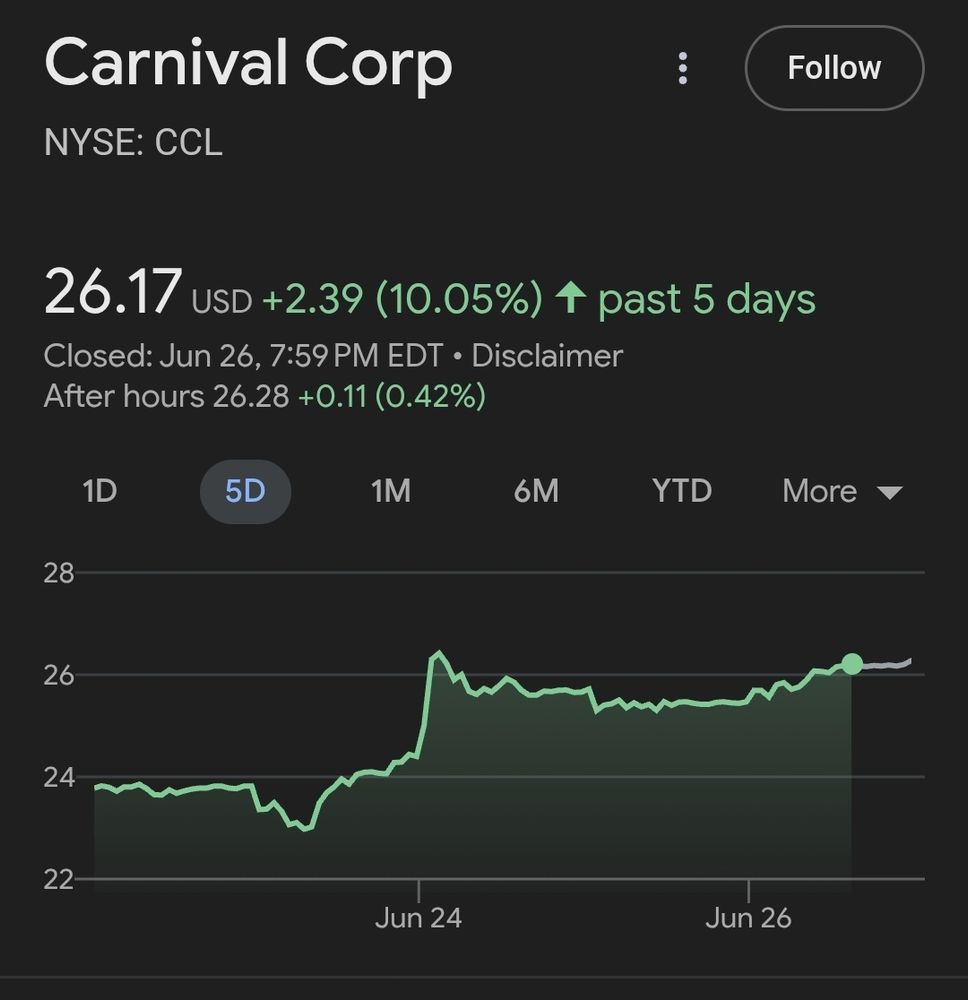
p(b | a) p(a)
p(a | b) = —————————
p(b)
Data Scientist | Computational Psychologist | Devout Bayesian
https://bayesianbeginnings.com/
- the blog: bit.ly/3GbOqQa
- original tweet thread: x.com/Nate__Haines...
- published (open access) paper: doi.org/10.1037/met0...

- the blog: bit.ly/3GbOqQa
- original tweet thread: x.com/Nate__Haines...
- published (open access) paper: doi.org/10.1037/met0...

sci-hub.se/https://psyc...

sci-hub.se/https://psyc...
there are of course many different ways that noise could arise. the two models have different implications re mechanisms, but the data I had available were not able to distinguish between them

there are of course many different ways that noise could arise. the two models have different implications re mechanisms, but the data I had available were not able to distinguish between them
GitHub: github.com/LedgerInvest...
Docs: ledger-investing-bermuda-ledger.readthedocs-hosted.com/en/latest/

GitHub: github.com/LedgerInvest...
Docs: ledger-investing-bermuda-ledger.readthedocs-hosted.com/en/latest/

haines-lab.com/post/2021-01...

haines-lab.com/post/2021-01...













haines-lab.com/post/2022-01...

haines-lab.com/post/2022-01...
nyc2024.pydata.org/cfp/talk/WAW...




nyc2024.pydata.org/cfp/talk/WAW...








